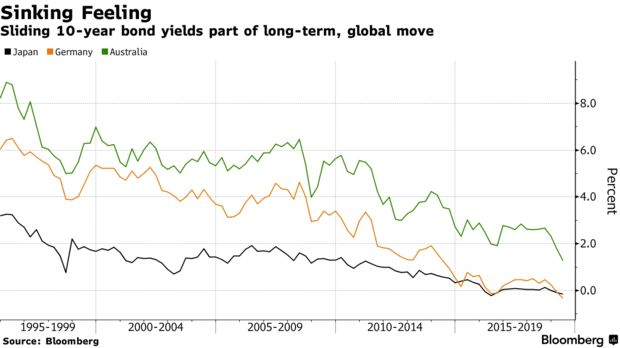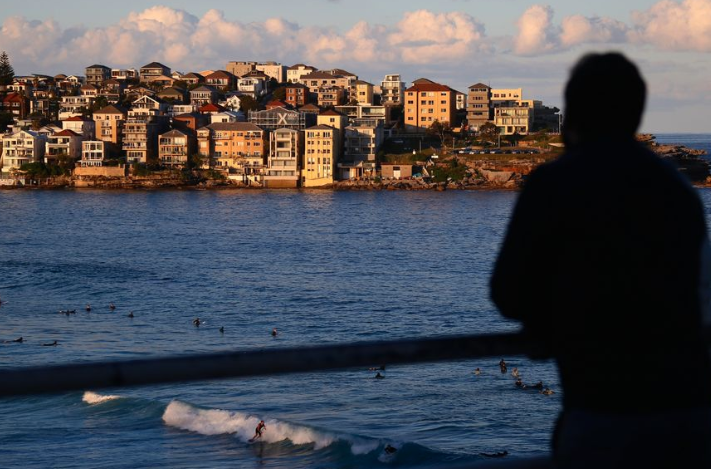Australia is continuing down the path of the global low yield charge, about to approach its final percentage point of “interest rate ammunition”, according to Bloomberg.
The 10 year yield in Australia hit an all time low of 1.26% last week, which is more than a full percentage point under where they started the year. This means that every Australian bond – all the way out to the longest maturity in 2047 – is yielding less than the bottom of the central bank’s 2% to 3% inflation target.
And the speed with which the market environment is changing in Australia is catching the attention of many.
Richard Yetsenga, chief economist at Australia & New Zealand Banking Group Ltd. in Sydney said: “On the screen a minute ago, Aussie 10-year bond yields at 1.33? I mean, is that a typo? Even six months ago they were like 100 points higher.”
Additionally, the market is now pricing in an even chance that the Reserve Bank of Australia will cut its policy rate to 0.5% over the next year. Governor Philip Lowe will cut the cash rate by 25 bps on Tuesday, to 1%, according to 18 of 26 economists surveyed.
Sally Auld, a senior interest-rate strategist at JPMorgan Chase & Co. in Sydney said: “There is a sense of inevitability about where we are heading. We’ve seen this play out in a number of other big developed economies over the last decade. Rates have come all the way down to something close to zero, and they stay there for a very long time.”
The cash rate at 0.5% means that bank earnings could slide 15%, hurting the largest component of the country’s equity markets. Companies like annuities provider Challenger Ltd. have already felt the brunt of the lower rates, falling about 30% this year and citing “lower for longer” rates as the problem.
And Governor Lowe has telegraphed that he is open to further cuts, with Australia’s job market lagging full employment. Like the U.S., Australia is also concerned with “putting inflation on course”. Lowe says that QE right now is “really quite unlikely”, but with how things have been going, we wouldn’t be surprised to see that stance reversed fully within a matter of just months.
Rates at 1% have been what has prompted other unorthodox steps across the globe from the Federal Reserve and the Bank of England. Lowe has said that Australia’s lower level is at about 0.25% to 0.5%.
Paul Sheard, a senior fellow at Harvard University’s Kennedy School said:
“The potent policy then becomes monetary policy supporting fiscal policy”. It’s a more pragmatic kind of approach in Australia when it comes to cooperation among policy makers.”
While it is seen as a positive that a lower cash rate could flow quickly to households with floating rate mortgages, Australia finds itself again staving off a problem temporarily that will eventually and inevitably lead to a far worse, longer term problem. But as long as economists and central bankers fail to realize this, we can expect Australia, along with its central banking peers across the globe, to be doomed to repeat history – just an order of magnitude worse than the last crash.
via ZeroHedge News https://ift.tt/2xnftRM Tyler Durden

